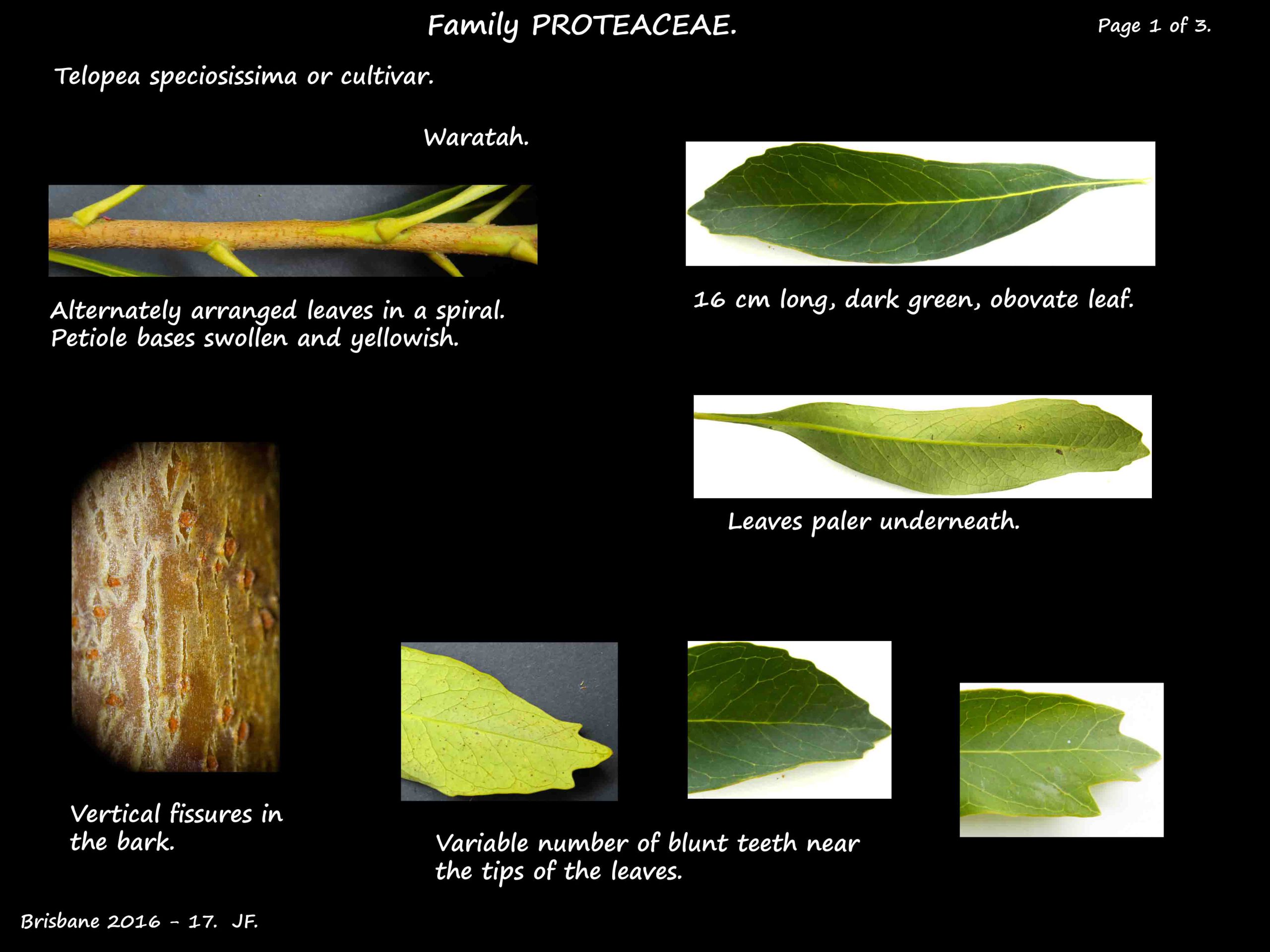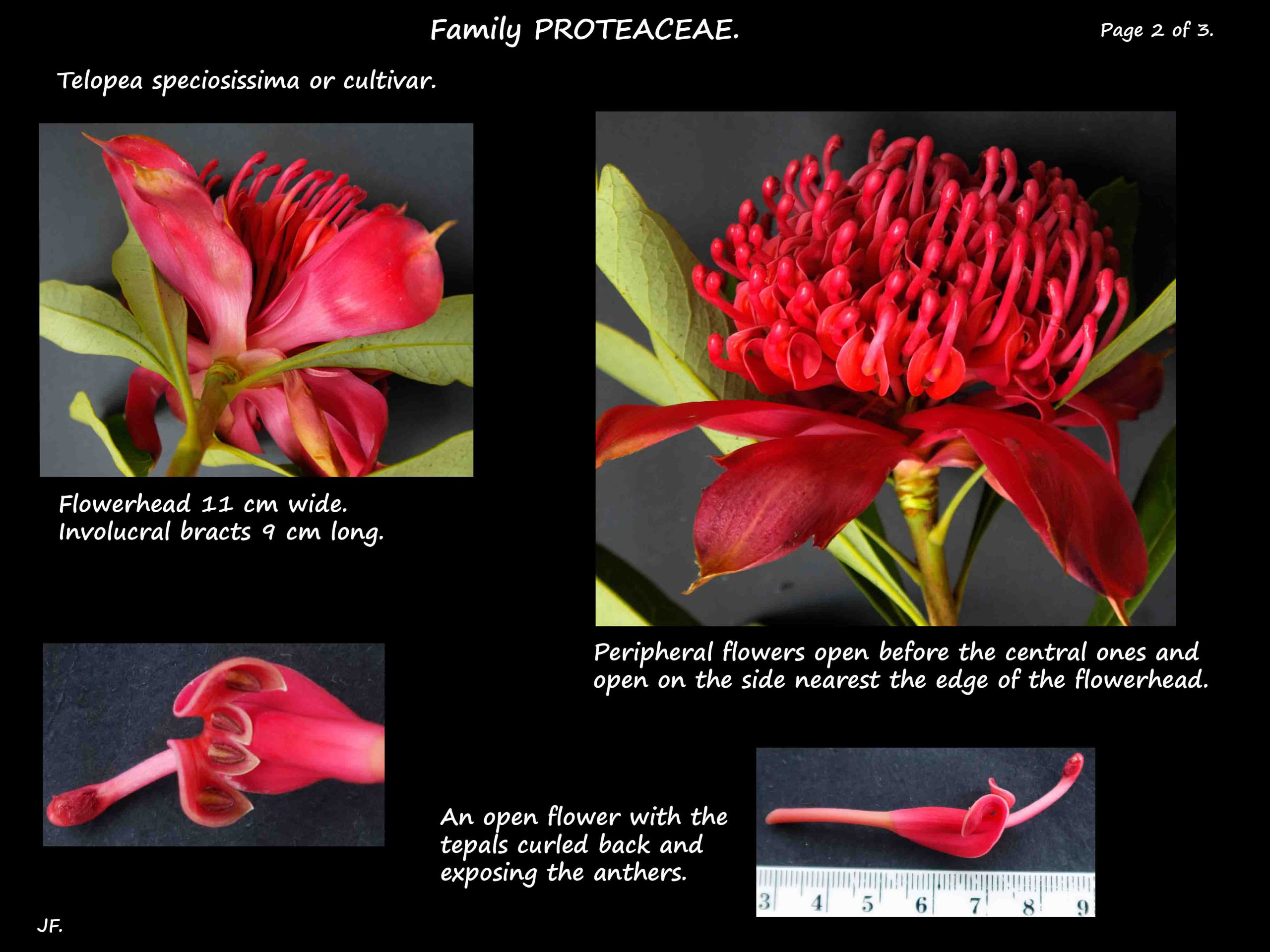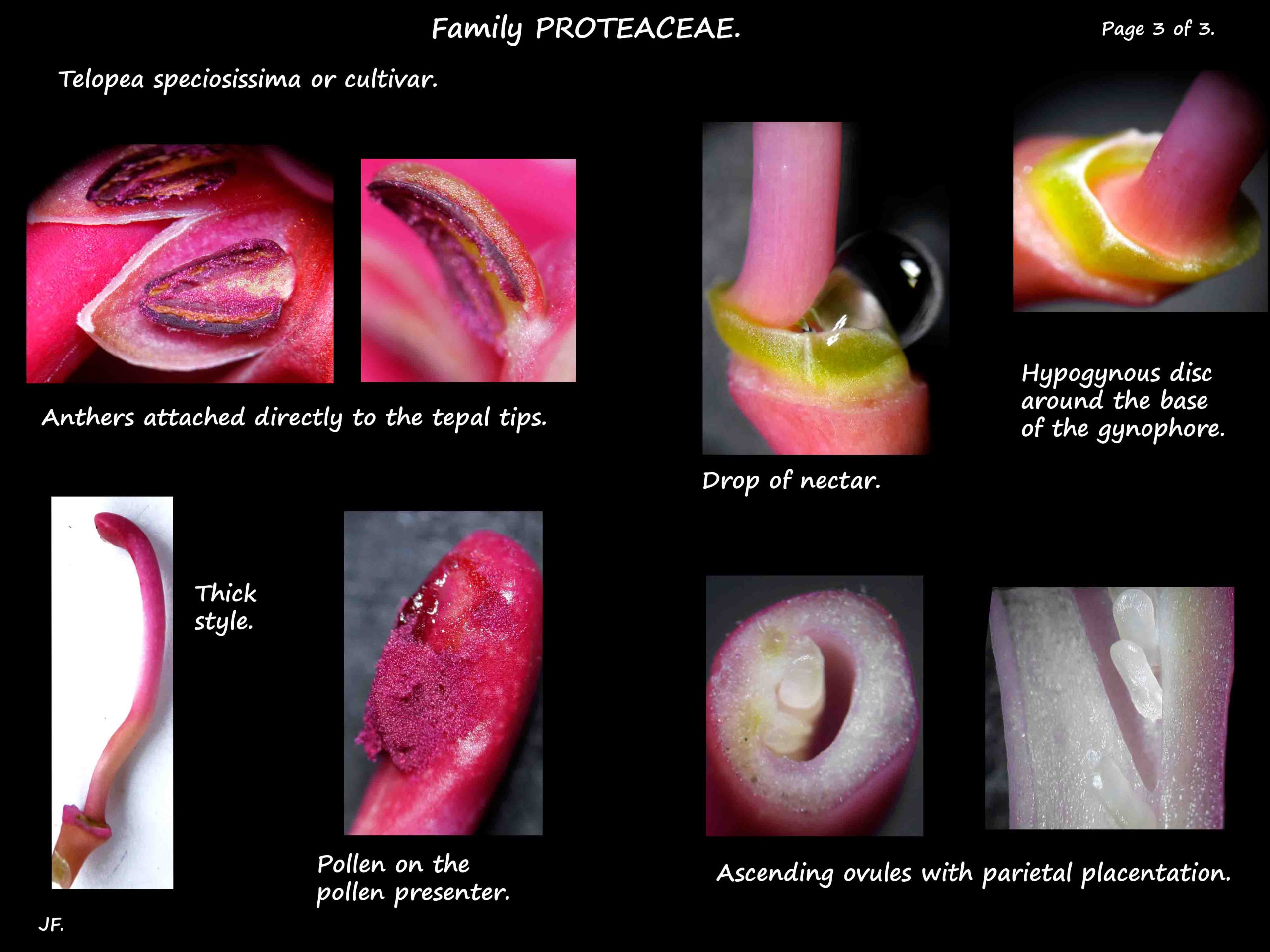Telopea speciosissima.
Family Proteaceae > Subfamily Grevilleoideae> Tribe Embothrieae > Subtribe Embothriinae.
There are 5 species of Waratahs all endemic in S. E. Australia.
They are large shrubs to small trees with spirally arranged, toothed leaves up to 20 cm long.
Red bracts surround the flowerheads that can have hundreds of small, red flowers.
Telopea speciosissima, the New South Wales Waratah is the best known species.
The large shrub up to 4 m high has stems that tend not to branch.
The tough, alternately arranged leaves are 15 to 20 cm long by 4 cm wide.
They are dark green and have large teeth on the edges.
The inflorescences are flowerheads with up to 250 small, bright red flowers.
The domed or globular flowerheads, 10 to 15 cm wide, are surrounded by bracts.
The red or whitish, leaf-like bracts are around 6 cm long.
Flowers have 4 tepals that are initially fused into a tube.
The slightly enlarged tips hold the anthers and the tip of the style.
When the pollen is mature the lengthening style splits the tepal tube inferiorly and escapes it.
The peripheral flowers open before the central ones.
The anthers, without filaments, insert into the tepal tips.
The styles are red but sometimes the pollen presenter at the tip is almost white.
The ovary is on a stalk or gynophore.
The hypogynous glands (nectaries) form a partial ring at the base of the gynophore.
The fruit are follicles, up to 15 cm long, that ripen from green to reddish-brown.
The seeds are winged.
Hybrids and cultivars.
There are numerous hybrids and cultivars producing plants that come in a range of sizes.
The leaf size and shape, bract colour and flower size and colour also varies.
Flower colours include red, pink, white, yellow, creamy-yellow and cream with pink tones.
Some have pink styles with white tips and others have pink or deep red bracts.
J.F.




